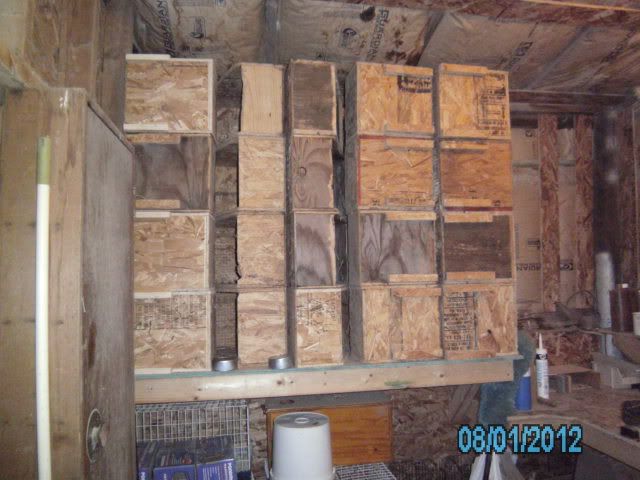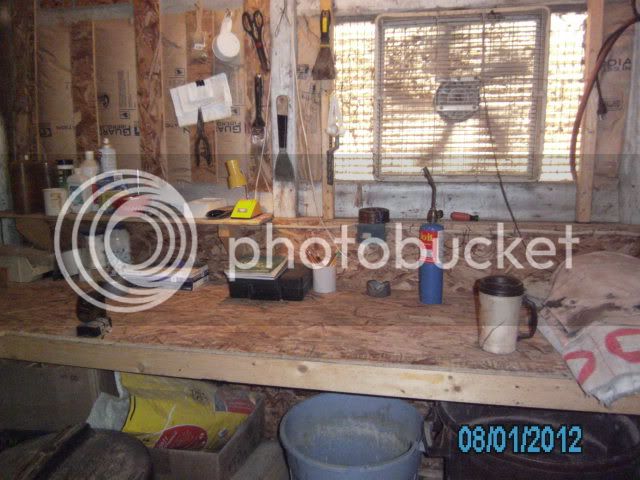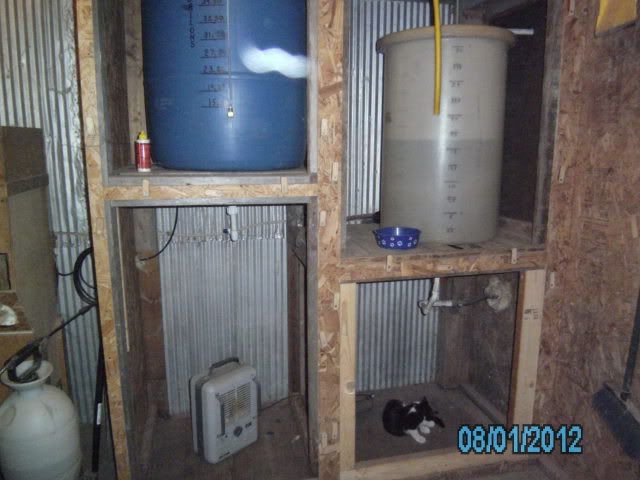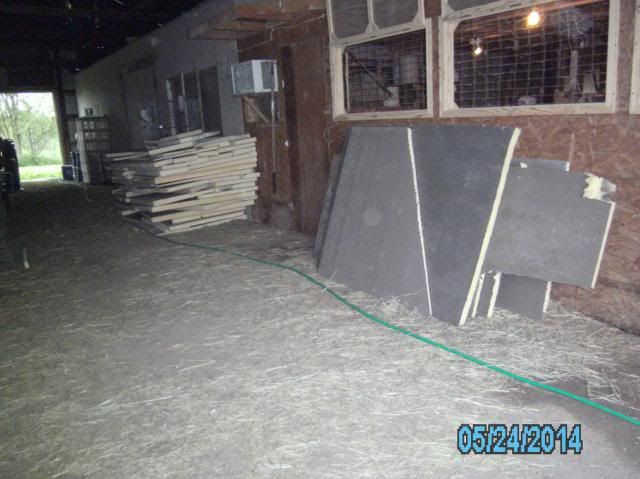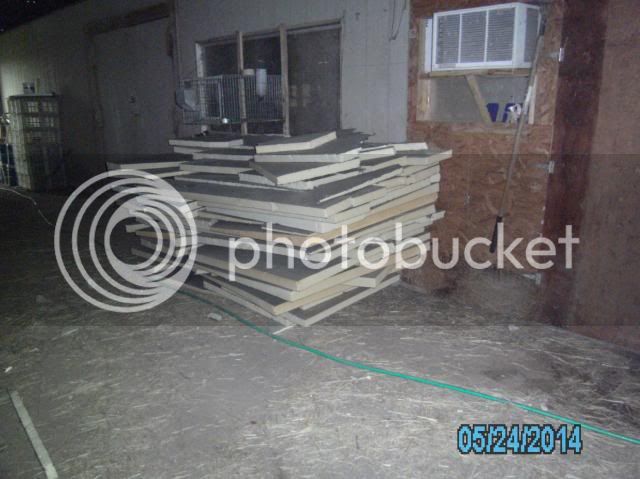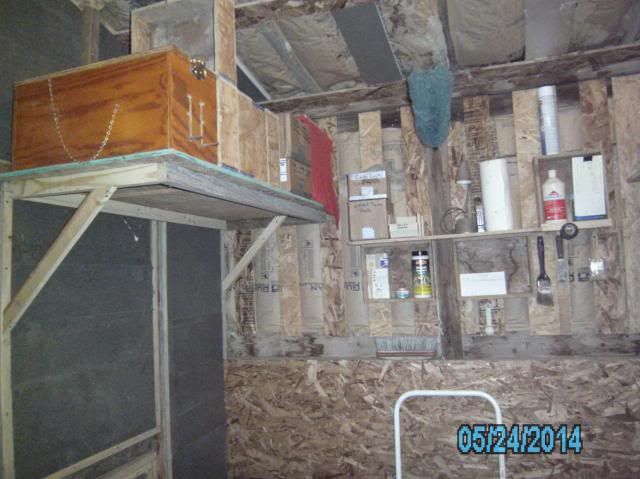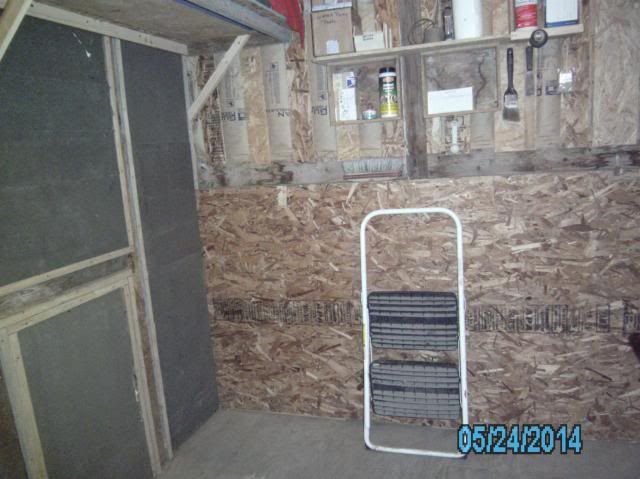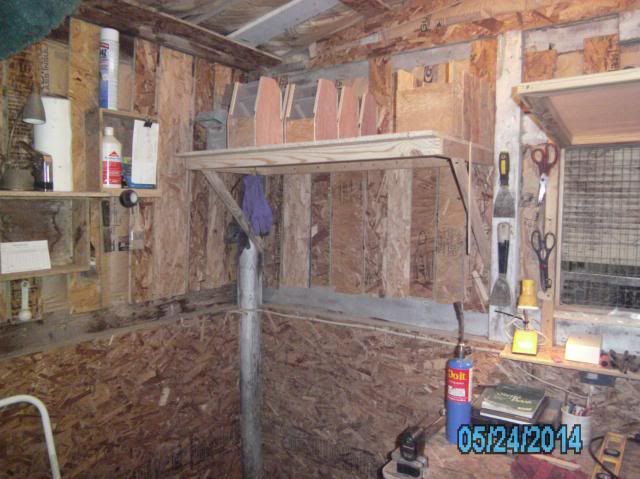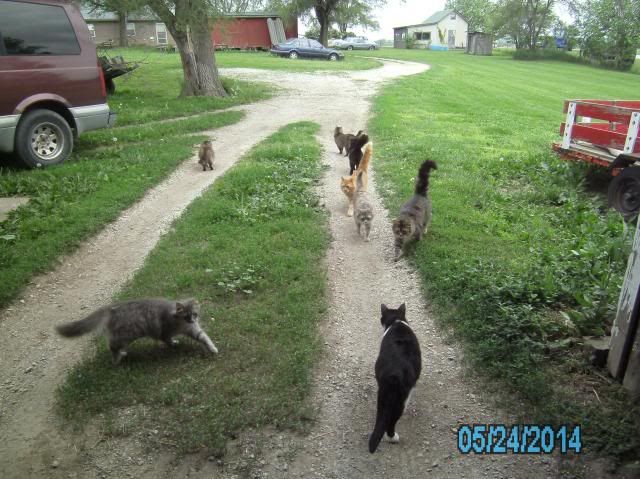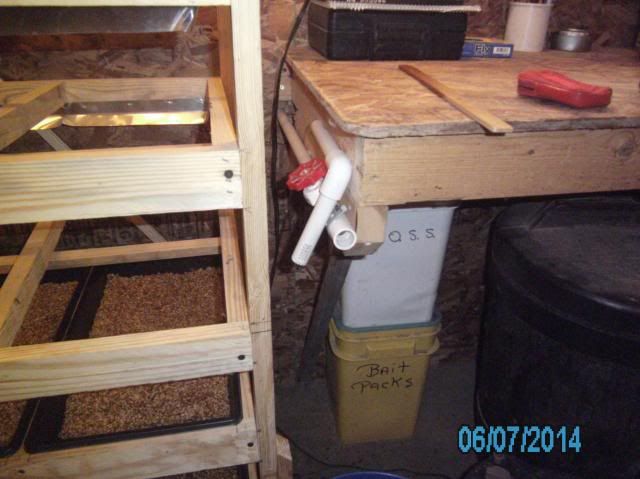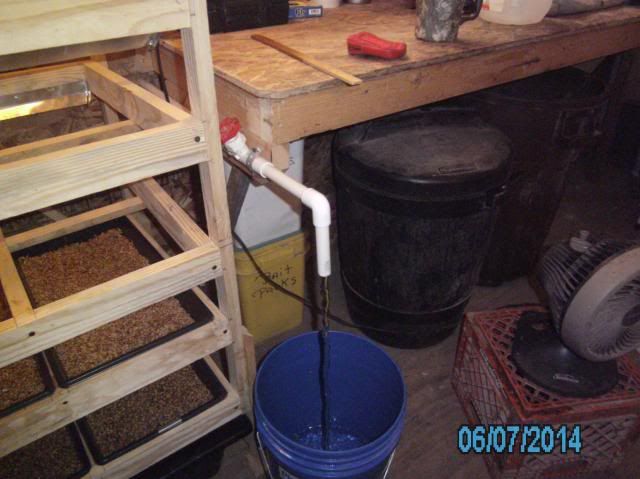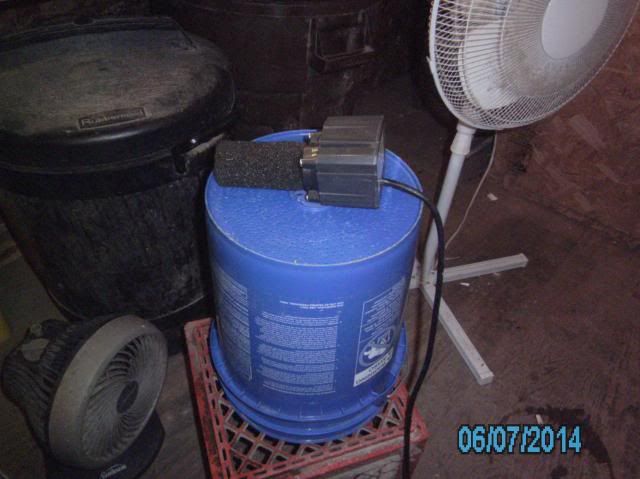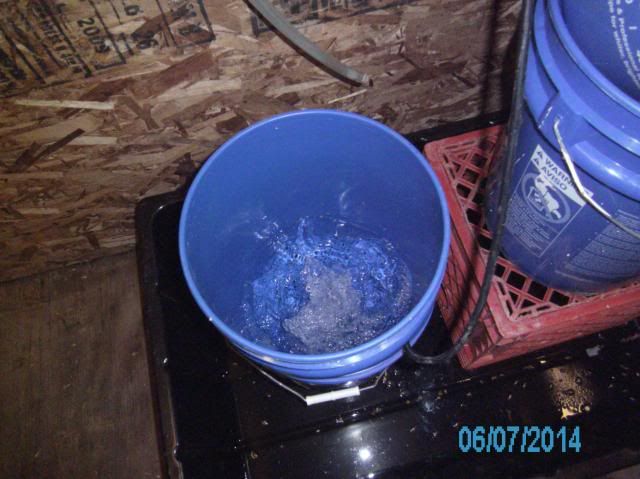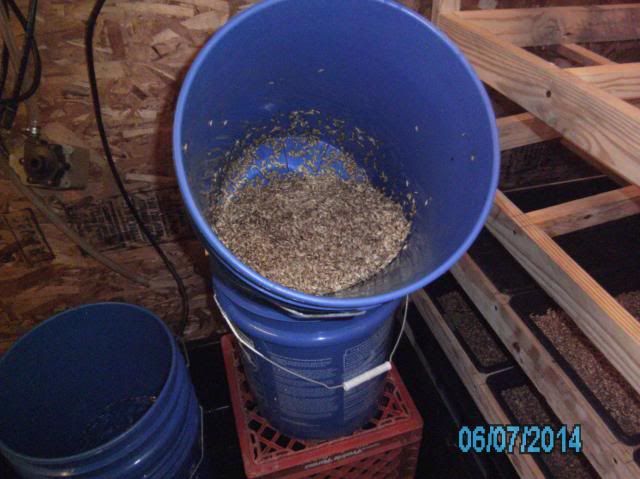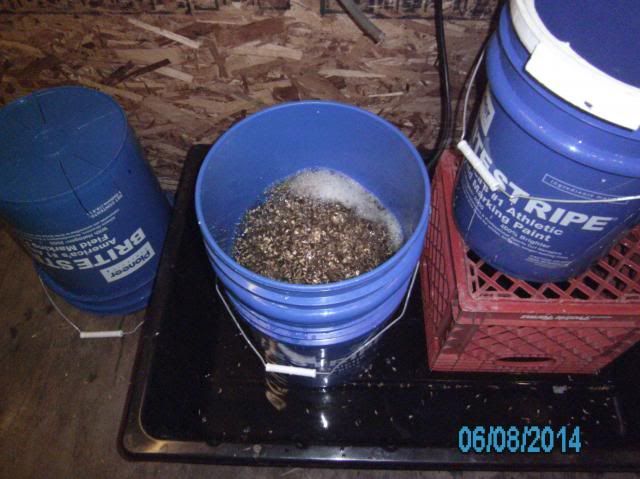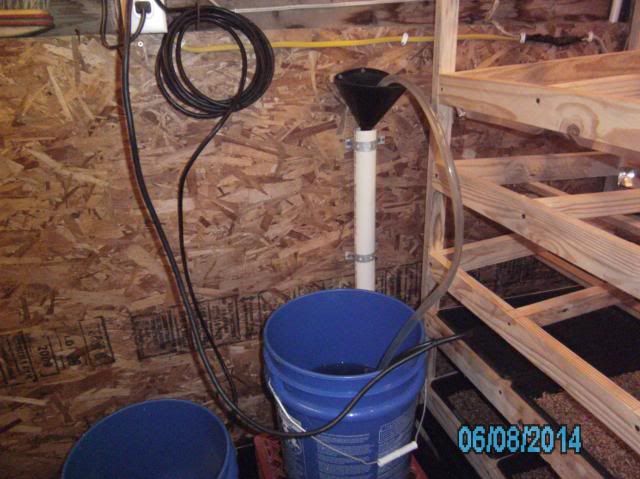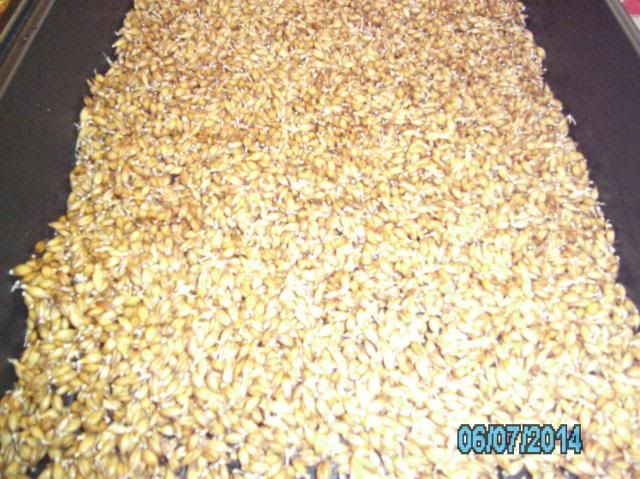grumpy
Well-known member
Got a long ways to go. I'm tired of being at the mercy of the feed
conglomerates. This is the first step to either: independence or wasted effort.
Time will tell.
The basic frame. If successful, another identical one will be built.

With luck, this unit will produce 20-25 pounds per day.
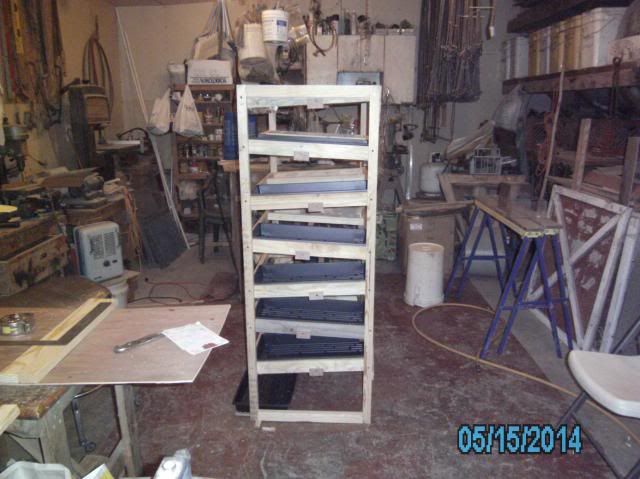
I'll post updated pictures as the project progresses. My goal is 50+ pounds
of barley fodder per day. About $350.00 to $400.00 per month in savings
on feed expenses.
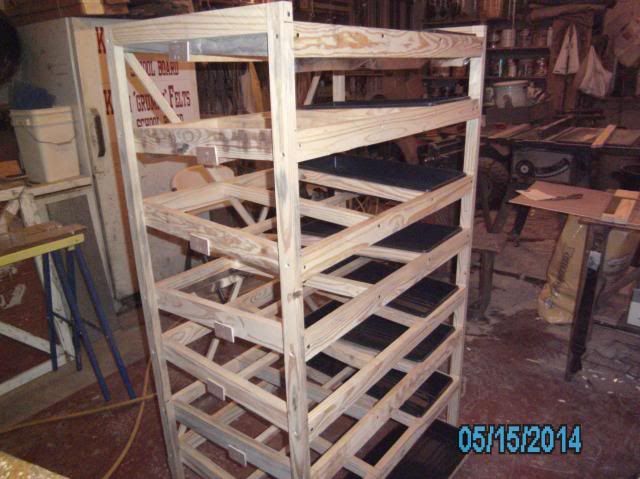
The project has two steps. The racks producing the feed, and the tight-room
that will be environmentally controlled. I'll have pics of both steps as they progress.
grumpy
conglomerates. This is the first step to either: independence or wasted effort.
Time will tell.
The basic frame. If successful, another identical one will be built.

With luck, this unit will produce 20-25 pounds per day.

I'll post updated pictures as the project progresses. My goal is 50+ pounds
of barley fodder per day. About $350.00 to $400.00 per month in savings
on feed expenses.

The project has two steps. The racks producing the feed, and the tight-room
that will be environmentally controlled. I'll have pics of both steps as they progress.
grumpy


































